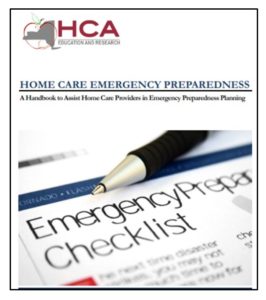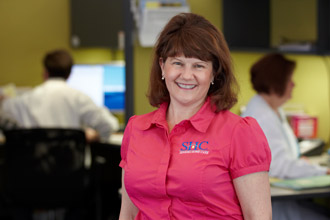By Stephen Tweed
You’ve seen it on the news. This past Friday evening after dark, a series of major tornados roared through five states, including my home state of Kentucky. A huge twister stayed on the ground for 227 miles and carved a swath three quarters of a mile wide. It was like a giant rotary lawn mower mulching up everything in it’s path for 200 miles.
While ground zero for storm damage was the small down of Mayfield, Kentucky, another town nearer to our home in Louisville was also damaged badly. Bowling Green, KY is about two hours south of Louisville, and one hour north of Nashville. Bowling Green is home to one of our Home Care CEO Mastermind members, Timesavers KY. As the sun came up on Saturday morning and we read the news, we immediately reached out to our friends, Paula Dermody, the owner and CEO of Timesavers KY, and the COO, Lynn Griffin, to see if they were safe and how they were affected by the storm.
After a few tense hours of waiting for a reply, we heard from Paula and talked with Lynn, and learned that they and their staff were all safe and their office was undamaged. They had quickly reached out and located their clients and caregivers and discovered that they were all safe. What a blessing, given the tragedy that had occurred all around them.
Are you Ready for a Major Disaster?
Over the years, we have had a number of our home care mastermind members and clients affected by major natural disasters. Some that come to mind include hurricanes Harvey, Irma, and Sandy; forest fires in California and Oregon; a major snow and ice storm in Buffalo NY. And there was 9-11. One of our clients was based in Redbank NJ, and many of their employees lost loved ones when the twin towers came down.
So, what are you and your team doing to be prepared for a major emergency?
Key Points for Disaster Preparedness
While no home care company can be totally prepared for a disaster of this magnitude, there are some things you can do to be better prepared when a hurricane, tornado, forest fire, or earthquake strikes in your agency’s service area. The Health Care Association of New York State and their HCA Education and Research foundation put together a Home Care Emergency Preparedness Guide.
Here are a few key points for you to put into your Disaster Preparedness Plan: 
- Establish an active disaster response team and define where and when this team will go into action.
- Prepare a written disaster plan.
- Define predetermined roles, lines of authority and communication, and backup for each role.
- Develop a plan for the education of staff on how to respond in the event of an emergency.
- Establish a 24 hour communication network and alternate communication systems.
- Establish a protocol for contacting staff, caregivers, clients, and outside agencies in the event of a disaster.
- Maintain up to date contact lists of staff, caregivers, clients, primary family contacts, and outside agencies.
- Include disaster preparedness drills in your written plan, and include them in your in-service education program.
- Define the circumstances under which your plan will be activated
- Define a designated assembly point for staff to report if your office is not accessible
- Maintain access to client and patient information so that you can prioritize who needs assistance first.
- Identify transportation alternatives in the event that roads are impassable to regular automobiles
- Develop a list of emergency equipment and supplies that you will keep on hand, and rotate regularly.
- Develop a method to quickly identify staff members who are responding to an emergency
This is a very brief list, but it will get you thinking about the things you can do to prepare.
For a more detailed guide, here’s a link to the Home Care Emergency Preparedness Guide from HANYS and HCA Education and Research.






